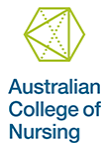Foundations of Paediatric Nursing

This unit of study is designed to provide students with the foundational knowledge that will equip them for a profession in the specialty of paediatric nursing. Knowledge of normal growth and development, and anatomy and physiology will prepare students to undertake comprehensive physical assessments of the infant, child, and young person. The complexities of fever and fever management in infants and children is explored alongside the common communicable diseases that are an important factor of early childhood health. Finally the mental health of children and young people and some acute mental health disorders are introduced.
Students are encouraged to use critical thinking and reflection to develop their nursing practice, while also advancing their understanding of how cultural safety and family centred care influence the relationship between the child, family and paediatric nurse.
Term : JANUARY, JULY
Hours of Study: 150
Credit Points : 6
Theme 1: The health of Australian children and families
Apply knowledge of normal growth & development to the physical assessment of infants, children and young people
Theme 2: Normal growth and development
Differentiate the anatomical and physiological alterations that occur from infancy to adolescence
Theme 3: Anatomy and physiology
Critically appraise current literature to ensure evidence based decisions in relation to paediatric nursing care planning
Theme 4: Paediatric assessment
Promote positive mental health for children, young people & their families in all contexts of paediatric healthcare
Theme 5: Fever and communicable disease
Analyse strategies that facilitate collaboration between healthcare professionals, the child & their family to ensure family focused & culturally safe care
Theme 6: Mental health of children
- Introduction to the Healthy Child Programme course...
- Posted By eIntegrity Healthcare e-Learning
- Posted Date: 2025-01-15
- Location:Online
- This session traces the history of the development of the current healthy child programme (pregnancy...
- Safeguarding Adolescents
- Posted By eIntegrity Healthcare e-Learning
- Posted Date: 2025-01-15
- Location:Online
- This session aims to help you understand specific issues relating to child protection for adolescent...
- Confidentiality
- Posted By eIntegrity Healthcare e-Learning
- Posted Date: 2025-01-15
- Location:Online
- This session introduces the main principles and legal aspects of confidentiality as applied to the c...
- Capacity and Consent
- Posted By eIntegrity Healthcare e-Learning
- Posted Date: 2025-01-15
- Location:Online
- This session explores the UK legal framework for assessing competence in young people, with particul...
- The Legal Framework for Working with Young People
- Posted By eIntegrity Healthcare e-Learning
- Posted Date: 2025-01-15
- Location:Online
- This session is an introduction to professional, legal and ethical issues concerning young people an...



